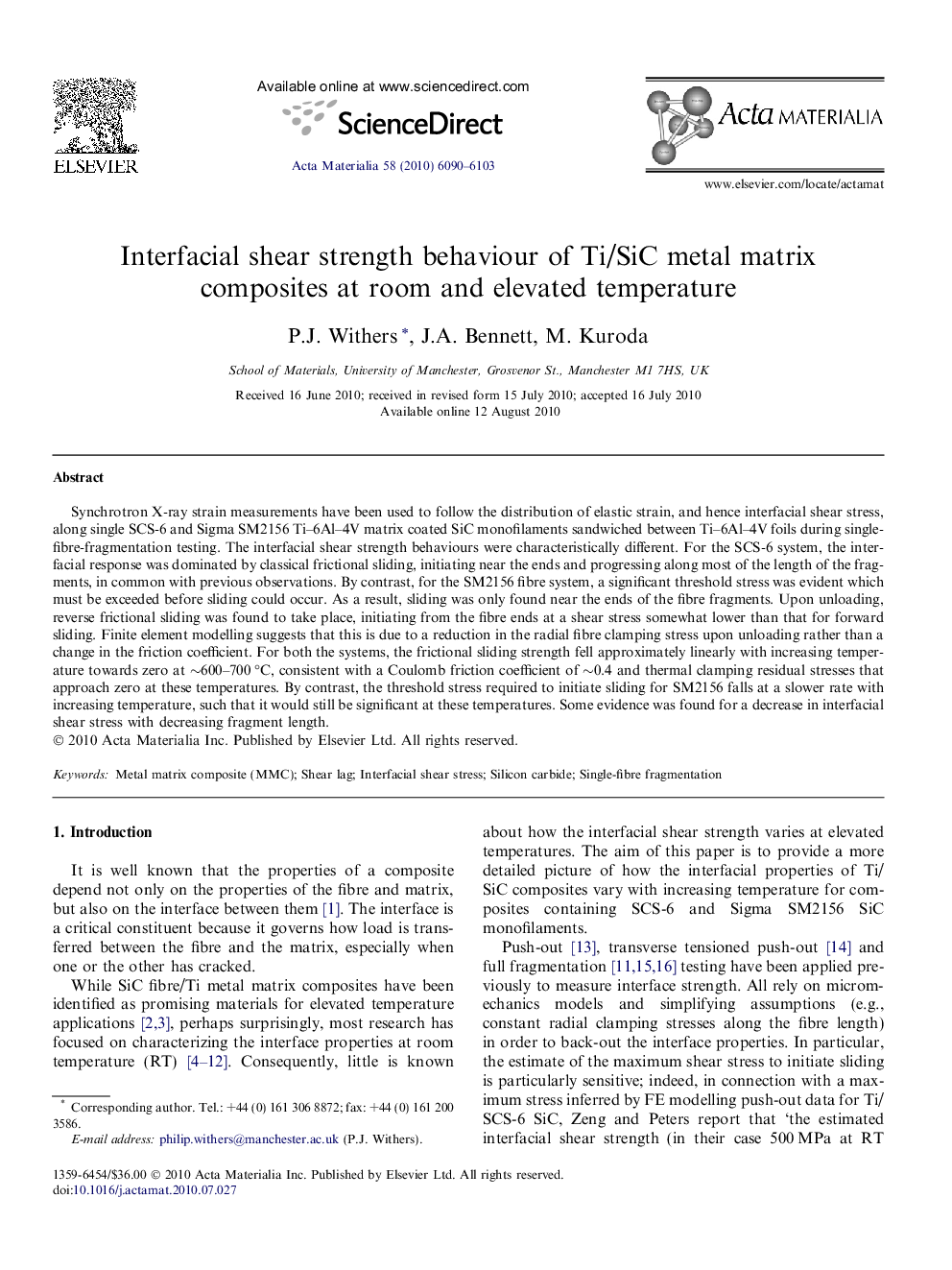| Article ID | Journal | Published Year | Pages | File Type |
|---|---|---|---|---|
| 1447584 | Acta Materialia | 2010 | 14 Pages |
Synchrotron X-ray strain measurements have been used to follow the distribution of elastic strain, and hence interfacial shear stress, along single SCS-6 and Sigma SM2156 Ti–6Al–4V matrix coated SiC monofilaments sandwiched between Ti–6Al–4V foils during single-fibre-fragmentation testing. The interfacial shear strength behaviours were characteristically different. For the SCS-6 system, the interfacial response was dominated by classical frictional sliding, initiating near the ends and progressing along most of the length of the fragments, in common with previous observations. By contrast, for the SM2156 fibre system, a significant threshold stress was evident which must be exceeded before sliding could occur. As a result, sliding was only found near the ends of the fibre fragments. Upon unloading, reverse frictional sliding was found to take place, initiating from the fibre ends at a shear stress somewhat lower than that for forward sliding. Finite element modelling suggests that this is due to a reduction in the radial fibre clamping stress upon unloading rather than a change in the friction coefficient. For both the systems, the frictional sliding strength fell approximately linearly with increasing temperature towards zero at ∼600–700 °C, consistent with a Coulomb friction coefficient of ∼0.4 and thermal clamping residual stresses that approach zero at these temperatures. By contrast, the threshold stress required to initiate sliding for SM2156 falls at a slower rate with increasing temperature, such that it would still be significant at these temperatures. Some evidence was found for a decrease in interfacial shear stress with decreasing fragment length.
